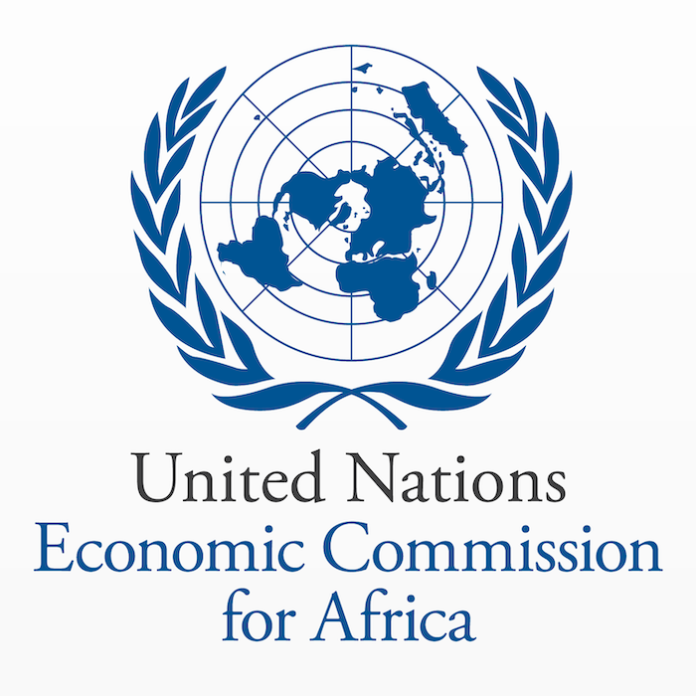South African countries performed well on their financial inclusion, between 2011 and 2021. Progress is partly attributed to rapid adoption of digital financial services including mobile money, according to financial experts at a webinar on the African Financial Sector Southern Africa.
Organized by the Economic Commission for Africa (ECA) in partnership with West African Economic and Monetary Union (WAEMU), the webinar is part of a Series themed, Regional Dialogues on the African Financial Sector – regional profile.
The aim of the regional profiles is to provide detailed information on the countries’ financial sectors, documenting recent trends, progress, challenges, and opportunities for a deeper financial sector.
In her opening remarks Eunice Kamwendo, ECA’s Director of the Subregional Office for Southern Africa noted the potential for growth, innovation and sustainable investments in the financial sector in Southern Africa.
“Southern African region’s financial sector faces financial challenges that include liquidity issues, debt distress, limited access to financial services, high levels of informality and regulatory constraints; Despite these challenges, it is important to prioritize the development of the financial sector to create stability, mobilize domestic resources and foster a stable environment for investment,” said Ms. Kamwendo.
Presenting a report on the demographic economic landscape of the Southern African region, Andrew Bamugye, Senior investment manager SME, Trade and Development Bank said the banking sector in Southern Africa has remained solvent with adequate capital; banking liquidity remained sufficient, with most banks seeing profitability between 2021 and 2023.
“The challenge in the banking industry in the region is the strong interconnection between the banking system and non – banking financial institutions and foreign markets, which leads to the risk of contagion,” said Mr. Bamugye.
He proposed that governments should increase fiscal space by expanding government revenues through diversification of the tax base and simplification of tax systems to reduce the exposure of banks to sovereign risks.
Punki Modise, Chief strategy and sustainability officer, ABSA Bank highlighted the varying levels of debt to GDP ratios across African countries and noted that some countries such as Kenya, Ghana, Kenya and Egypt have adopted unsustainable debt strategies. She also emphasized the importance of project preparation and bankability in the private sector.
“Authorities should enhance competition in the banking systems through the promotion of new players especially those that help to improve financial inclusion,” she said.
In addition, she said banks operating in Africa need to have a more end-to-end approach to risk management, considering bankability at all stages.
On capital markets most countries in the Southern African region have a low market capitalization. The Johannesburg stock exchange, which is the leading stock exchange in Africa has a market capitalization of $1022.8 trillion representing 133% of GDP in 2023, against 51.9% of Mauritius and 18.6% of Namibia.
A lack of liquidity characterizes the bulk of the South African stock market and the breadth of the stock market in the region remains limited.
Furthermore, a small, listed number of companies and corporate bonds tend to dominate the fixed income market while the proportion of government bonds in the normal value is much higher.
“A deeper pool of insurers is required for the acceleration of green bonds growth in the region especially among corporate borrowers,” said Mr. Bamugye.
According to the experts attending the meeting, the pension fund penetration remains low in most Southern African countries. However, the high pension penetration rate in South Africa, Namibia and Botswana were the result of good investment returns on the funds, based on a diversified investment strategy coupled with a strong asset allocation process,
Bernard Yen, Actuary and managing director Aon Solutions Ltd, Mauritius highlighted the challenge of encouraging people in the formal sector to save and discussed the importance of structural changes to increase participation in pension funds.
He suggested that structural changes such as tax incentives and simplified registration processes could drive participation. He also emphasized the need for a multi-faceted approach to increase pension fund participation in the region.
“Countries should explore ways to increase participation of informal sector workers in multi-employer pension funds,” he added.
On the question of tapping into southern African SMEs, participants noted that the majority are financially constrained and face a lack of skills in corporate governance, financial management and often contend with high collateral requirements.
Mr. Bamugye noted the need to help SMEs develop bankable business plans and called for streamlining government support programs towards them.
He emphasized the importance of blended finance structures to address the challenges faced by SMEs in the region including the need for risk capital and conditionality and use of unfunded guarantees to unlock local liquidity.
He acknowledged the obstacle of bank credit access in the region particularly for SMEs and encouraged innovative and creative solutions to promote financial inclusion advising that countries should continue to explore innovative instruments and blended approaches to solve SME credit access problems.
Distributed by APO Group on behalf of United Nations Economic Commission for Africa (ECA).

